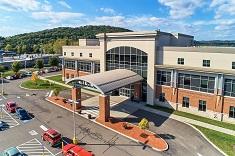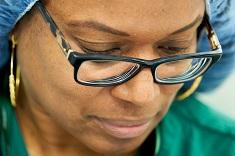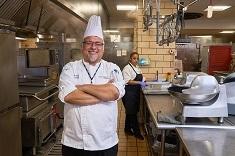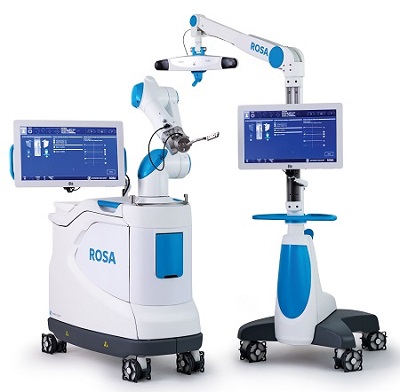
Robotic-Assisted Knee Surgery at UHS Chenango Memorial Hospital
We now offer a robotic-assisted surgery option for knee replacements at UHS Chenango Memorial Hospital.
Have you experienced...
- Pain when walking or climbing stairs
- Difficulty getting in and out of chairs and bathtubs
- Pain that prevents you from sleeping
- Limitations to activities you love due to knee pain
If you’ve experienced any combination of these symptoms or others, and medication and walking aids like a cane aren’t delivering enough relief, it may be time to consider knee replacement.
How ROSA technology works:
Prior to surgery, you’ll get a series of x-rays done, which will help your surgeon create a personal plan for your surgery.
Your personalized plan plus data collected during your surgery will provide immediate feedback to your surgeon, resulting in a surgery completely customized to you.
The surgical procedure using the ROSA robot is similar to conventional knee replacement, but with a robotic assistant. Your surgeon has been specially trained to use the ROSA robot to personalize the surgical approach for your unique anatomy. It’s important to understand that the robot does not operate on its own. Your surgeon is in the operating room the entire time and is making all of the decisions throughout your surgery.
During your procedure, your surgeon will take several x-rays, which ROSA will use to provide real-time data to your surgeon. This information, combined with your surgeon’s skill, helps him/her know how to position your implant based on your unique anatomy.
Following surgery, you may be hospitalized based upon the recovery plan your surgeon decides is best for you. Upon returning home you will need to continue taking your regular medications and exercising as directed by your surgeon or physical therapist. Walking, remaining active, and practicing the required exercises are the quickest ways to full recovery.
Recovery time varies, but most people should be able to drive after two weeks, garden after three to four weeks, and golf after six to eight weeks. Your surgeon will tell you when and what activities you can return to, and what activities to avoid.
Additional benefits of robotic-assisted surgery:
- Accelerate recovery time and reduce pain due to the minimal trauma to muscles, tendons and nerves.
- Reduce scarring from the use of a smaller incision.
- Less radiation exposure as a CT Scan is not required.


